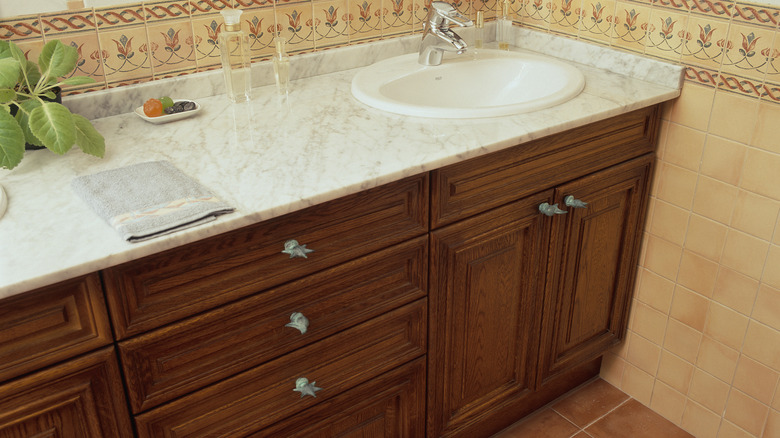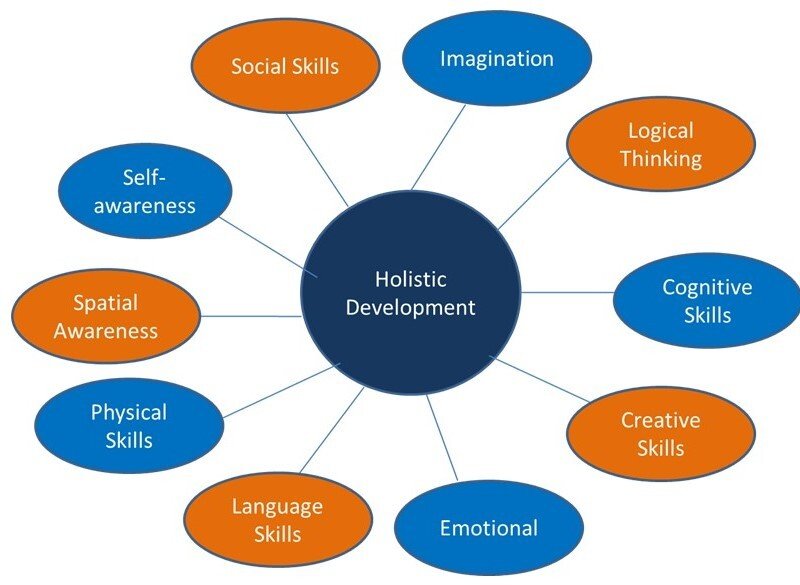Getty Images is a prominent stock photography agency known for its vast collection of high-quality images. In the context of home photography, Getty Images has adopted an innovative approach that highlights the aesthetic and emotional appeal of home settings. This guide explores Getty Images‘ role in the photography industry and underscores the significance of home photography in creating relatable and engaging visual content.
What is Getty Images and Its Role in Photography

Getty Images is a leading global supplier of stock images, video, and music, with a concentration on delivering diverse and impactful visual content. Founded in 1995, the agency has evolved to meet the changing demands of creative professionals across various sectors, including advertising, publishing, and digital media. Getty Images plays a crucial role in shaping visual culture by curating and licensing a wide range of photographs that reflect contemporary themes and artistic trends.
Through partnerships with photographers from around the world, Getty Images offers a platform for emerging talents alongside established artists. The agency emphasizes quality and authenticity, ensuring that the images resonate with target audiences. As a trusted resource, Getty Images not only helps brands find the right visuals but also supports photographers in gaining visibility and monetizing their work, ultimately enhancing the overall landscape of commercial photography.
The Importance of Home Photography in Stock Images

Home photography encompasses images that capture the essence of domestic life, showcasing everything from interior design to family moments. In stock imagery, the significance of home photography cannot be overstated. It serves as a vital tool for brands and marketers striving to connect with audiences on a personal level.
1. Relatability: Home-themed images evoke emotions and resonate with viewers, making advertisements and marketing materials more impactful.
2. Aesthetic Appeal: Captivating home photography can enhance the visual narrative of content, drawing viewers in and encouraging engagement.
3. Diversity of Themes: Home photography spans various concepts, from minimalistic design to cozy family moments, offering brands versatility in storytelling.
Effective home photography can transform ordinary images into powerful visual narratives that align with the values and lifestyles of consumers, highlighting the evolving nature of modern living. As such, Getty Images‘ approach to curating and promoting home-focused stock photography is pivotal in meeting the needs of a diverse clientele.
Exploring Getty Images’ Collection of Home Photography

When it comes to finding the perfect imagery that captures the essence of home life, Getty Images offers an extensive collection that is hard to beat. Their library is a treasure trove of inspiration for anyone looking to evoke feelings of comfort, love, and warmth through photography.
From cozy corners of living rooms bathed in soft natural light to vibrant snapshots of families gathered around the dinner table, Getty Images provides a wide variety of home photography styles. Here are some highlights to explore:
- Interior Design: Discover stunning visuals of beautifully arranged spaces, showcasing various design aesthetics from minimalist to eclectic.
- Family Life: Browse through heartwarming images of family moments, capturing everything from playtime to quiet evenings spent together.
- Cooking and Culinary Arts: Delight in food photography that emphasizes home cooking, with vibrant ingredients and beautifully plated dishes that tell stories of love and tradition.
- Home Activities: Explore candid moments of everyday life, whether it’s someone reading in a sunny nook or kids playing in the backyard.
Each photograph tells a unique story, allowing creatives—from bloggers to advertisers—to find the perfect visual representation of the familial experience or a particular lifestyle. By diving deep into Getty Images‘ collection, you can uncover photographs that resonate with your audience, enhancing your projects with authentic home-inspired visuals.
How Getty Images Curates High-Quality Home Photography
The charm of Getty Images lies not just in its vast collection, but also in the meticulous curation process that ensures only the highest quality home photography makes the cut. This attention to detail is what sets Getty apart and makes it a go-to resource for creatives across industries.
Here’s a glimpse into Getty Images’ curation process that upholds the standard of excellence:
- Expert Curators: The team consists of seasoned art directors and photographers who have an eye for quality. Their expertise allows them to recognize works that meet high artistic and technical standards.
- Diverse Perspectives: Getty actively seeks out contributions from photographers around the world. This diversity enriches their collection, providing a variety of styles and cultural viewpoints on home life.
- Quality Control: Each image is rigorously reviewed for clarity, composition, and emotional impact. Only the best find a permanent home in their library.
- Trending Styles: The curation team stays abreast of current trends in home photography, incorporating popular styles and themes that resonate with contemporary audiences.
This commitment to quality not only benefits clients seeking stunning images but also helps build a reliable brand reputation over the years. As a result, Getty Images remains a trusted partner for creatives looking to enhance their visuals with some of the best home photography available.
Trends in Home Photography and Getty Images’ Response
Home photography has evolved significantly in recent years, responding to both technological advances and changing consumer needs. At Getty Images, this evolution is embraced wholeheartedly. Here are some key trends and how Getty Images is adapting:
- Authenticity Over Perfection: Modern consumers prefer real, relatable images over meticulously staged ones. Getty Images has broadened its collection to include more candid, genuine moments that showcase authentic living environments.
- Sustainability and Eco-conscious Living: As awareness of environmental issues grows, photos that highlight sustainable practices in home design and living are on the rise. Getty Images has launched initiatives to feature homes that integrate eco-friendly elements.
- Diversity in Home Representation: There is a growing demand for images that reflect a diverse range of lifestyles and cultures. In response, Getty Images has committed to showcasing multi-ethnic families and various cultural aesthetics in home settings.
- Remote Workspaces: With more people working from home than ever, there’s an increased demand for images capturing home office setups. Getty is curating collections specifically focused on productive and stylish work-from-home environments.
- Indoor Gardening and Nature Incorporation: The trend of bringing nature indoors, either through plants or biophilic design, is gaining popularity. Getty Images is actively seeking to feature images that align with this natural aesthetic.
By keeping a pulse on these trends, Getty Images ensures that their offerings remain relevant and appealing to a broad audience, meeting the diverse needs of consumers in a constantly changing marketplace.
Best Practices for Home Photographers Working with Getty Images
Partnering with Getty Images as a home photographer can be a rewarding experience, but understanding best practices is crucial for success. Here are some key tips to help you make the most of your collaboration:
- Focus on Quality: Always prioritize high-resolution images. Getty Images has rigorous quality standards; ensure your work is sharp, well-lit, and properly composed.
- Emphasize Variety: Capture a range of styles and settings. Different homeowners have unique tastes, so showcasing various architectural styles, colors, and layouts is vital.
- Create a Story: Think about how your images can tell a story. A collection of photos that highlight different areas of a home can offer a compelling narrative about lifestyle.
- Embrace Diversity: Strive to include diverse subjects and environments in your portfolio. Highlighting various cultures and lifestyles can make your work more appealing to a wider audience.
- Stay Updated on Trends: Regularly research current trends in home photography. Participating in web seminars, subscribing to relevant blogs, and following design influencers can keep your skills sharp.
Remember, Getty Images values originality and uniqueness, so don’t shy away from incorporating your personal style into your work. Your perspective is what will set you apart in this competitive field!
How to Effectively License Home Photos on Getty Images
Licensing your home photography on Getty Images can be a rewarding experience. However, it’s essential to approach it strategically to maximize your success. Here are some effective tips to help you navigate the licensing process:
- Understand the Licensing Models: Getty Images primarily offers two types of licenses – editorial and commercial. Knowing the differences is crucial. Editorial licenses are for news-related content and cannot be used for promotional purposes, while commercial licenses can be used in advertising and merchandise.
- Optimize Your Image Metadata: When you upload your photographs, adding comprehensive and relevant metadata is vital. Include details like location, subjects, and context. This not only makes your photos more discoverable but also appeals to potential buyers looking for specific imagery.
- Focus on Quality: High-quality images are a must. Ensure your photos are well-composed, properly lit, and edited professionally. Images that stand out will attract more views and increase your chances of being licensed.
- Stay on Trend: Keep an eye on current trends in home design and architecture. Photos that resonate with contemporary styles or popular interior themes often perform better. Researching what’s hot can give you an edge over competitors.
- Tag Wisely: Utilizing appropriate tags can help potential customers find your work more easily. Think like a buyer and consider what keywords they might use to search for images like yours.
By following these steps, you’ll not only improve your chances of selling your home photography on Getty Images but also build a strong portfolio that showcases your individuality and creativity.
Common Misconceptions About Getty Images and Home Photography
Getty Images is a reputable platform for photographers, but there are several misconceptions that can cloud a potential contributor’s perspective. Let’s clear up some of the most common myths:
- It’s Only for Professional Photographers: While Getty Images does feature many professionals, anyone with a good eye and high-quality images can submit their work. Many hobbyists have found success on the platform.
- Only Unique Images Sell: While uniqueness is important, Getty Images also has a vast audience that looks for images that capture popular trends or themes. You don’t need to reinvent the wheel; just find your own style within those trends.
- Once Uploaded, You Sit Back and Wait: Many believe that after uploading their photos, the work is done. In reality, promoting your work, engaging with the community, and keeping your portfolio updated are key to ongoing success.
- Getty Images Doesn’t Value Contributors: While it may seem large and impersonal, Getty Images actually provides a structured licensing program that can benefit photographers financially. They offer competitive royalties and can broaden your audience significantly.
- Licensing is Complicated: The licensing process might seem daunting at first, but Getty provides clear guidelines and support. Once you understand the system, it’s quite straightforward.
Understanding these misconceptions can empower you to approach Getty Images with confidence, knowing that your work is valuable and that there is a place for it in the market.
Future of Home Photography in Stock Image Platforms
As we look to the future, the landscape of home photography in stock image platforms like Getty Images is evolving rapidly. With advancements in technology and shifting consumer preferences, it’s crucial to understand the trends shaping this space.
One major trend is the rise of high-quality mobile photography. As smartphones continue to improve in terms of camera quality, we’re seeing more users capture stunning home images with ease. This democratization of photography means that Getty Images may increasingly feature pictures taken by everyday people, not just professional photographers.
Moreover, the demand for authenticity is more significant than ever. Consumers are gravitating towards real-life representations of homes rather than stylized, magazine-like images. This evolution is pointing toward a greater emphasis on:
- Genuine lived-in spaces: Images that tell a story or provide a feeling of comfort and warmth.
- Diverse representations: Showcasing varied architectural styles and cultural contexts to resonate with a broader audience.
- Sustainable themes: Images reflecting eco-friendly living and sustainable home design practices, aligning with growing environmental concerns.
Another significant factor is the integration of AR and VR technologies. These innovations will allow potential buyers or renters to experience homes in immersive ways, offering a new horizon for stock image platforms. As Getty Images adapts to incorporate such technologies, the way home photography is utilized will inevitably change, enhancing user experience and engagement.
Conclusion and Key Takeaways on Getty Images’ Home Photography Strategy
In summary, Getty Images is not only responding to current market demands but is also anticipating future trends in home photography. Here are some key takeaways regarding their strategy:
- Emphasis on Authenticity: Getty Images is increasingly prioritizing images that convey authenticity and relatability. Expect to see more ‘lived-in’ spaces that resonate with diverse audiences.
- Diverse Content Representation: Cultural and stylistic diversity in home imagery is crucial. Getty aims to showcase a range of homes that reflect various lifestyles and backgrounds.
- Adaptation to Technology: The incorporation of AR and VR signifies a move toward immersive experiences that engage users more deeply with home content.
- Growth in Mobile Photography: With more users taking high-quality photos on their smartphones, Getty is likely to broaden its focus on user-generated content, making stock images more relatable.
Overall, the future of home photography on platforms like Getty Images looks promising, with exciting opportunities for innovation and creativity. By evolving with consumer expectations and technological advances, Getty Images is positioned to remain a leading force in the stock image industry.


